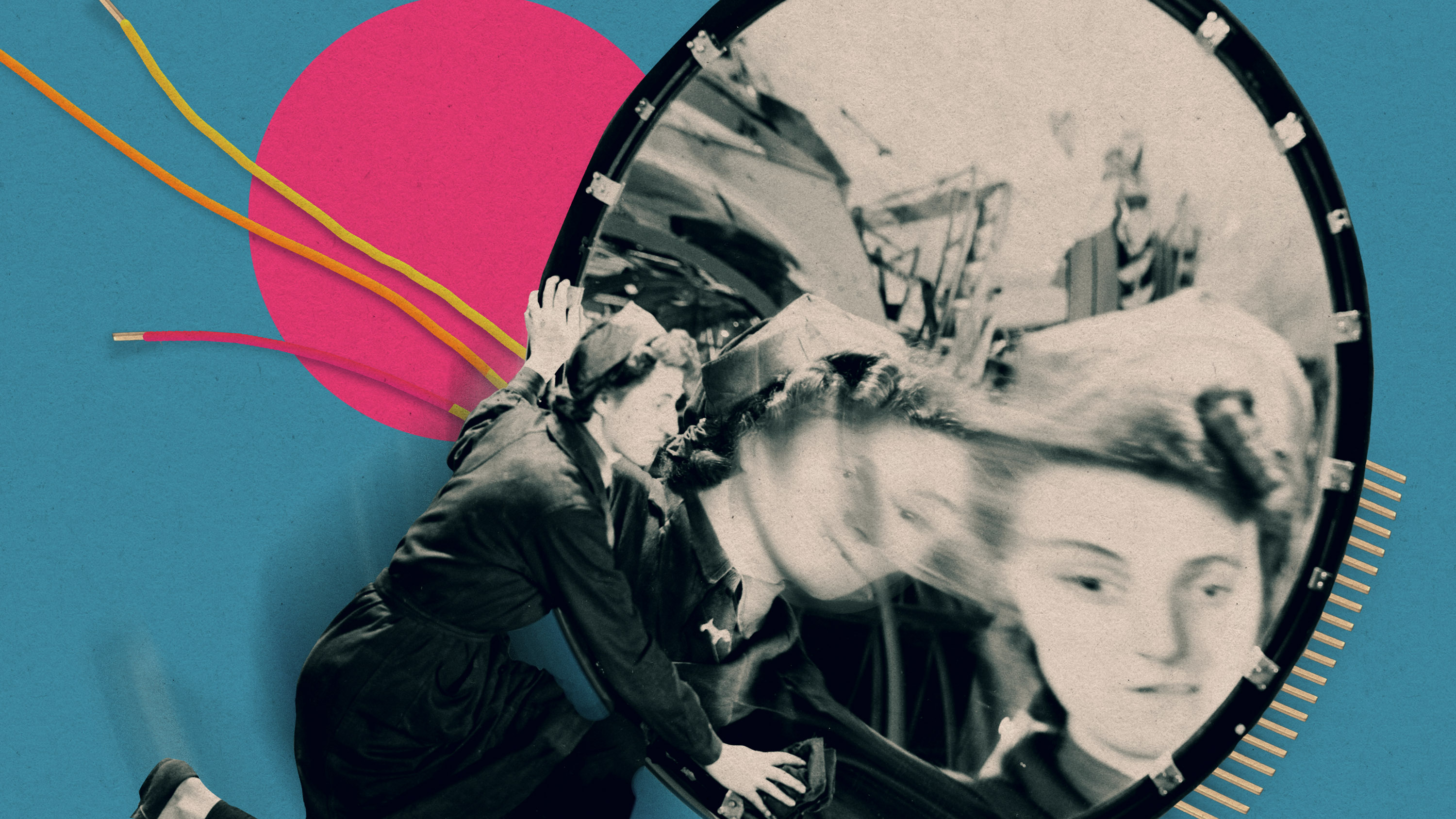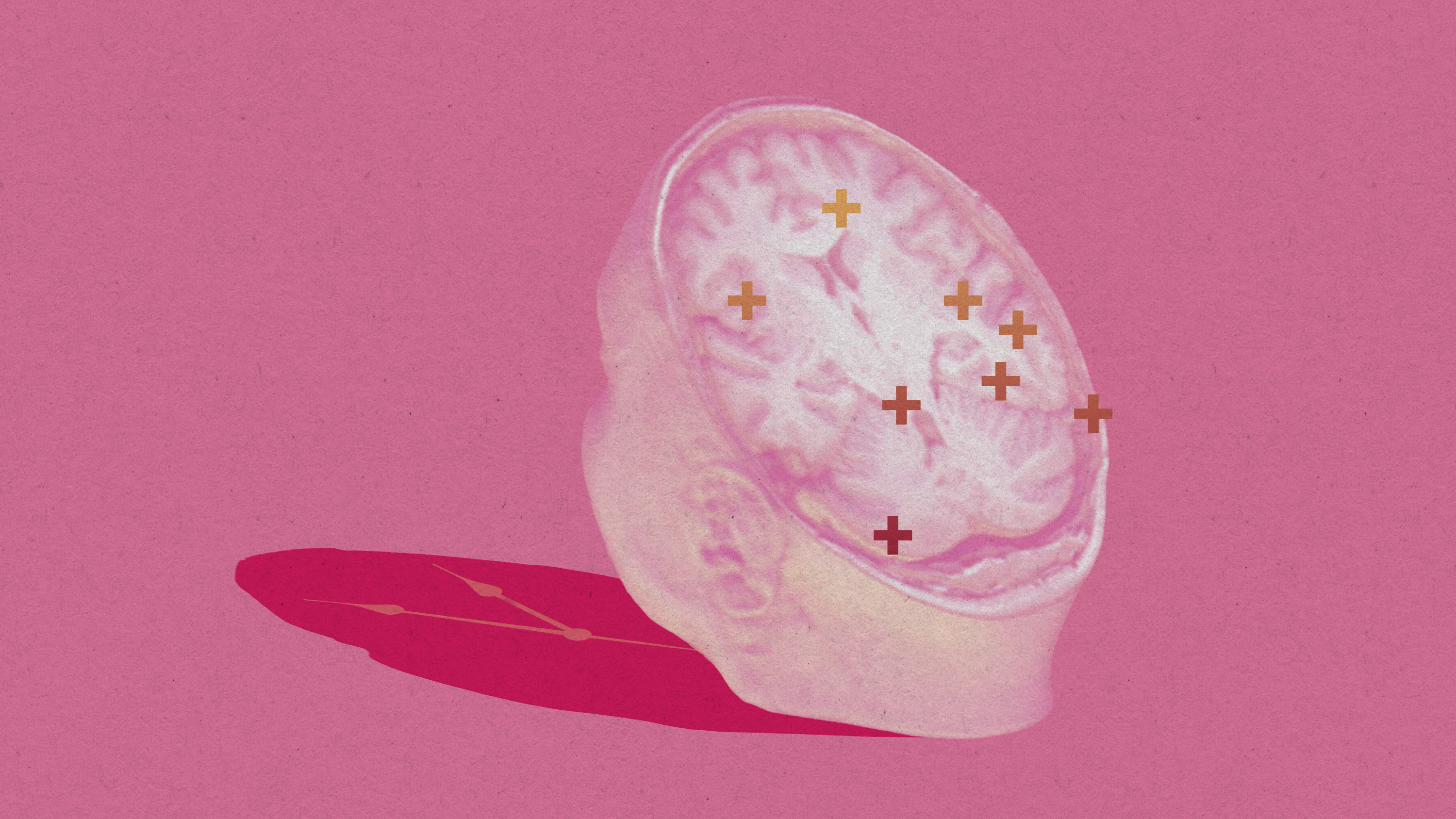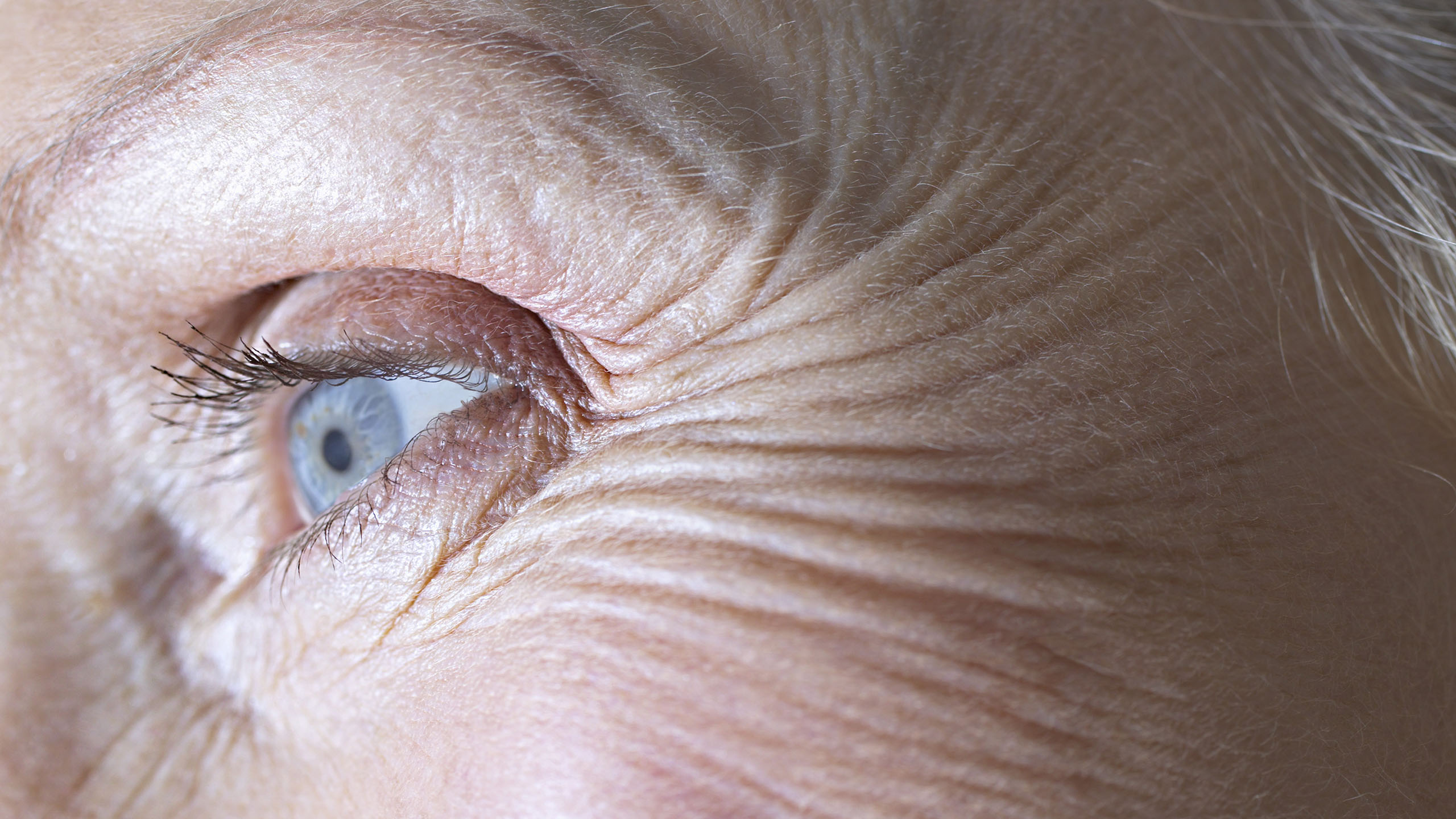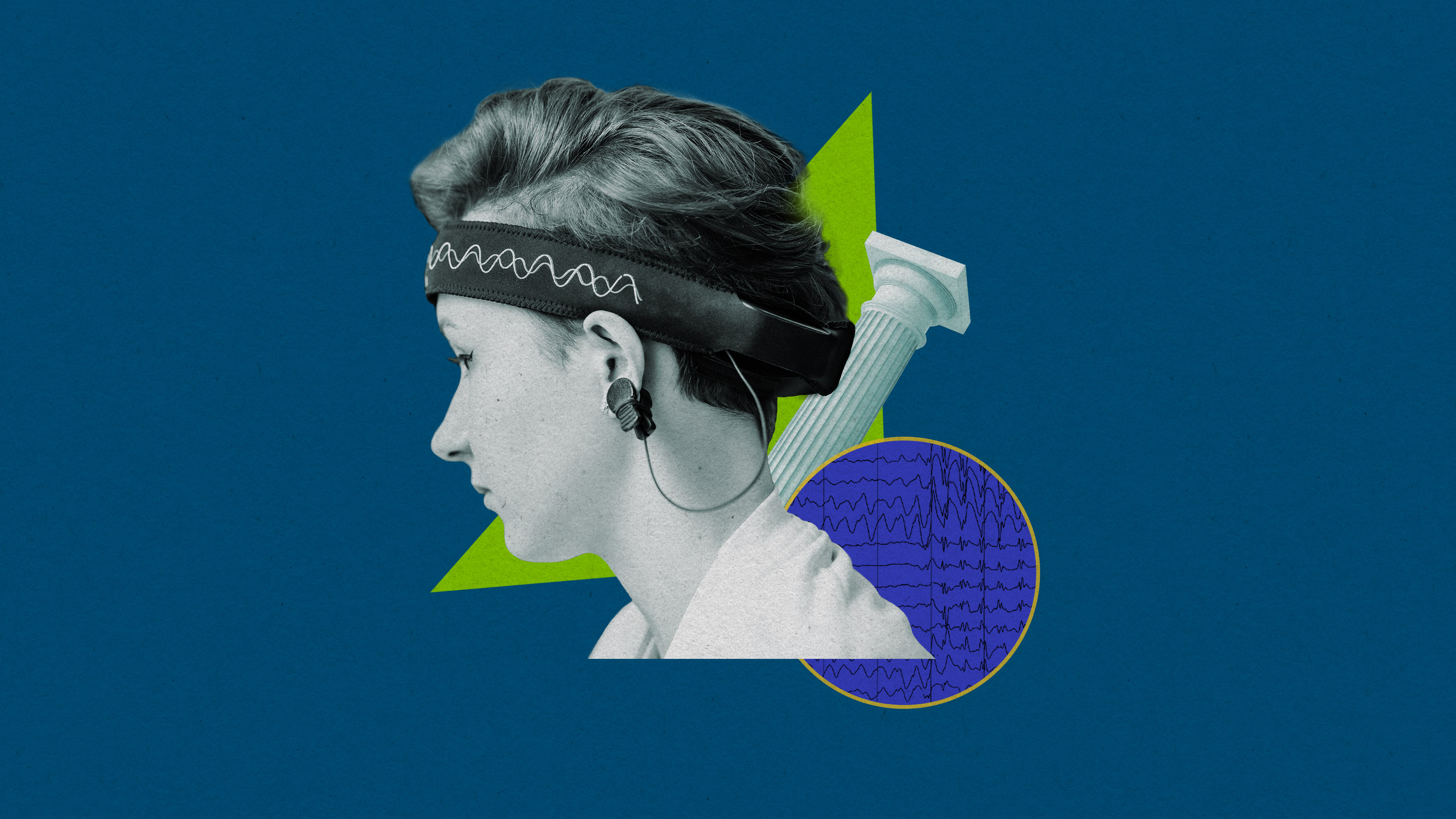A brain implant changed her life. Then it was removed against her will.
Her case highlights why we need to enshrine neuro rights in law.

Sticking an electrode inside a person’s brain can do more than treat a disease. Take the case of Rita Leggett, an Australian woman whose experimental brain implant changed her sense of agency and self. She told researchers that she “became one” with her device.
She was devastated when, two years later, she was told she had to remove the implant because the company that made it had gone bust.
The removal of this implant, and others like it, might represent a breach of human rights, ethicists say in a paper published earlier this month. The issue will only become more pressing as the brain implant market grows in the coming years and more people receive devices like Leggett’s. “There might be some forms of human rights violations that we haven’t understood yet,” says ethicist Marcello Ienca at the Technical University of Munich, a coauthor of the paper.
“Being forced to endure removal of the [device] … robbed her of the new person she had become with the technology,” Ienca and his colleagues wrote. “The company was responsible for the creation of a new person … as soon as the device was explanted, that person was terminated.”
Leggett received her device during a clinical trial for a brain implant designed to help people with epilepsy. She was diagnosed with severe chronic epilepsy when she was just three years old and routinely had violent seizures.
The unpredictable nature of the episodes meant that she struggled to live a normal life, says Frederic Gilbert, a coauthor of the paper and an ethicist at the University of Tasmania, who regularly interviews her. “She couldn’t go to the supermarket by herself, and she was barely going out of the house,” he says. “It was devastating.”
Leggett was recruited for the clinical trial when she was 49 years old, says Gilbert. A research team in Australia was testing the effectiveness of a device designed to warn people with epilepsy of upcoming seizures. Trial volunteers had four electrodes implanted to monitor their brain activity. Recordings were sent to a device that trained an algorithm to recognize patterns preceding a seizure.
A handheld device would signal how likely a seizure was to occur in the coming minutes or hours—a red light indicated an imminent seizure, while a blue light meant a seizure was very unlikely, for example. Leggett signed up and had the device implanted in 2010.
Human-machine symbiosis
While trial participants enjoyed varying degrees of success, the device worked brilliantly for Leggett. For the first time in her life, she had agency over her seizures—and her life. With the advance warning from the device, she could take medication that prevented the seizures from occurring.
“I felt like I could do anything,” she told Gilbert in interviews undertaken in the years since. “I could drive, I could see people, I was more capable of making good decisions.” Leggett herself, now 62, declined an interview; she is recovering from a recent stroke.
She also felt that she became a new person as the device merged with her. “We had been surgically introduced and bonded instantly,” she said. “With the help of science and technicians, we became one.”
Gilbert and Ienca describe the relationship as a symbiotic one, in which two entities benefit from each other. In this case, the woman benefited from the algorithm that helped predict her seizures. The algorithm, in turn, used recordings of the woman’s brain activity to become more accurate.
But it wasn’t to last. In 2013, NeuroVista, the company that made the device, essentially ran out of money. The trial participants were advised to have their implants removed. (The company itself no longer exists.)
Leggett was devastated. She tried to keep the implant. “[Leggett and her husband] tried to negotiate with the company,” says Gilbert. “They were asking to remortgage their house—she wanted to buy it.” In the end, she was the last person in the trial to have the implant removed, very much against her will.
“I wish I could’ve kept it,” Leggett told Gilbert. “I would have done anything to keep it.”
Years later, she still cries when she talks about the removal of the device, says Gilbert. “It’s a form of trauma,” he says.
“I have never again felt as safe and secure … nor am I the happy, outgoing, confident woman I was,” she told Gilbert in an interview after the device had been removed. “I still get emotional thinking and talking about my device … I’m missing and it’s missing.”
Leggett has also described a deep sense of grief. “They took away that part of me that I could rely on,” she said.
If a device can become part of a person, then its removal “represents a form of modification of the self,” says Ienca. “This is, to our knowledge, the first evidence of this phenomenon,” he says.
Ian Burkhart, who received an experimental brain implant to restore movement to his hands following a spinal cord injury, has also experienced feelings of loss. “When I signed up … I knew the device would be explanted at the end of the trial,” says Burkhart, who had his device removed in 2021. “I would say I lost a sense of myself to some degree.”
“When I first had my spinal cord injury, everyone said: ‘You’re never going to be able to move anything from your shoulders down again’” Burkhart says. “I was able to restore that function, and then lose it once again. That was really tough.”
Burkhart’s case is different from Legget’s. He was only able to use his device in a lab setting, which he said helped him compartmentalize its benefits. And while the team that implanted his device also struggled with funding, it was an infection that eventually led to its removal.
But his implant changed his life, and losing it was challenging, he says: “It can be a big emotional and psychological and physical effort to have those devices removed.”
Neuro rights as human rights
This removal could be seen as a violation of human rights, Ienca says. The EU Charter of Fundamental Rights incorporates a right to mental integrity. But this can be interpreted in different ways. Most legal systems seem to see it as a right to access mental-health care rather than specific protections against harm, says Ienca.
And the right to freedom of thought enshrined in the Universal Declaration of Human Rights is similarly open to interpretation. It was historically put in place to protect freedoms surrounding beliefs, religion, and speech. But that could change, says Ienca. “Rights are not static entities,” he says.
He is among the ethicists and legal scholars investigating the importance of “neuro rights”—the subset of human rights concerned with the protection of the human brain and mind. Some are currently exploring whether neuro rights could be recognized within established human rights, or whether we need new laws.
“A patient should not have to undergo forcible explantation of a device,” says Nita Farahany, a legal scholar and ethicist at Duke University in North Carolina, who has written a book about neuro rights.
“If there is evidence that a brain-computer interface could become part of the self of the human being, then it seems that under no condition besides medical necessity should it be allowed for that BCI to be explanted without the consent of the human user,” says Ienca. “If that is constitutive of the person, then you’re basically removing something constitutive of the person against their will.” Ienca likens it to the forced removal of organs, which is forbidden in international law.
Mark Cook, a neurologist who worked on the trial Leggett volunteered for, has sympathy with the company, which he says was “ahead of its time.” “I get a lot of correspondence about this; a lot of people inquiring about how wicked it was,” he says. But Cook feels that outcomes like this are always a possibility in medical trials of drugs and devices. He stresses that it’s important for participants to be fully aware of these possibilities before they take part in such trials.
Ienca and Gilbert, however, think something needs to change. Companies should have insurance that covers the maintenance of devices should volunteers need to keep them beyond the end of a clinical trial, for example. Or perhaps states could intervene and provide the necessary funding.
Burkhart has his own suggestions. “These companies need to have the responsibility of supporting these devices in one way or another,” he says. At minimum, companies should set aside funds that cover ongoing maintenance of the devices and their removal only when the user is ready, he says.
Burkhart also thinks the industry could do with a set of standards that allow components to be used in multiple devices. Take batteries, for example. It would be easier to replace a battery in one device if the same batteries were used by every company in the field, he points out. Farahany agrees. “A potential solution … is making devices interoperable so that it can be serviced by others over time,” she says.
“These kinds of challenges that we’re now observing for the first time will become more and more common in future,” says Ienca. Several big companies, including Blackrock Neurotech and Precision Neuroscience, are making significant investments in brain implant technologies. And a search for “brain-computer interface” on an online clinical trials registry gives more than 150 results. Burkhart believes around 30 to 35 people have received brain-computer interfaces similar to his.
Leggett has expressed an interest in future trials of brain implants, but her recent stroke will probably render her ineligible for other studies, says Gilbert. Since the trial ended, she has been trying various combinations of medicines to help manage her seizures. She still misses her implant.
“To finally switch off my device was the beginning of a mourning period for me,” she told Gilbert. “A loss—a feeling like I’d lost something precious and dear to me that could never be replaced. It was a part of me.”
Deep Dive
Biotechnology and health

This researcher wants to replace your brain, little by little
The US government just hired a researcher who thinks we can beat aging with fresh cloned bodies and brain updates.

Aging hits us in our 40s and 60s. But well-being doesn’t have to fall off a cliff.
Lifestyle changes could counter some of the deterioration.

Beyond gene-edited babies: the possible paths for tinkering with human evolution
CRISPR will get easier and easier to administer. What does that mean for the future of our species?

A new law in California protects consumers’ brain data. Some think it doesn’t go far enough.
Tech companies collect brain data that could be used to infer our thoughts—so it’s vital we get legal protections right.
Stay connected
Get the latest updates from
MIT Technology Review
Discover special offers, top stories, upcoming events, and more.